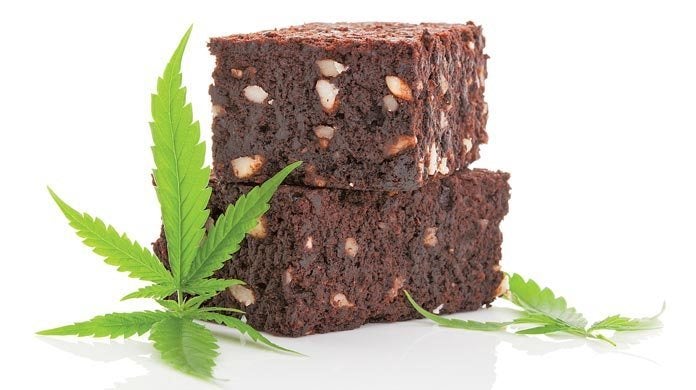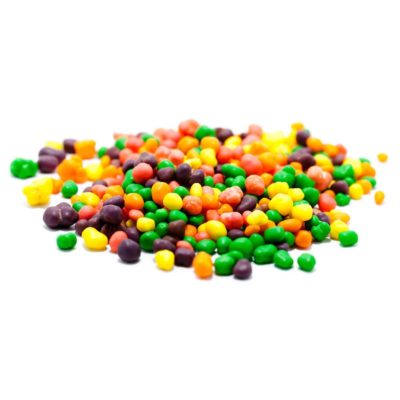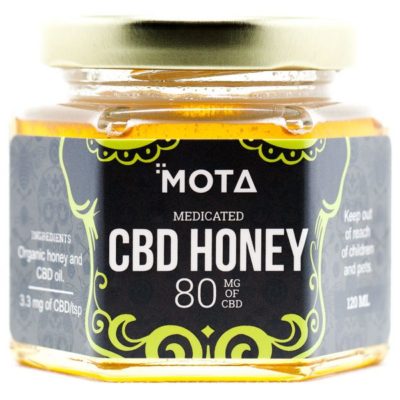Cannabis 101, Edibles
Beginner’s Guide to Cannabis Edibles
Throughout modern history, the image most commonly attached to the consumption of cannabis would be that of a joint or pipe being smoked. For as long back as we have photo evidence, people could be seen smoking it throughout the world. However, with the rapidly growing acceptance and an increasing number of governments legalizing cannabis, the preferred method of consumption is moving away from smoking and towards ingestion. As people have become more and more aware of the dangers inhaling smoke, the industry too moved with them, offering an increasing number of ingestible options. After all, eating edibles doesn’t involve the combustion of paper and flower, and can be just as potent as smoking it, if not far more. The onset of effects may be slower, but the effects last longer since the cannabinoids stay in the body longer. As Canada prepares to roll out legal edibles for sale in the coming months, we thought we would take a look at the wonderful world of eating weed and all that it might entail.
History of People Eating Weed
To better understand what we are dealing with when it comes to cannabis ingestion, it is beneficial to look at its history across the world. Eating cannabis is an ancient practice. In ancient India, for example, many people would incorporate cannabis in their food and drinks. They would use it not only as a form of medicine but as part of their ceremonies and rituals.
Ancient Japan also cultivated hemp and cannabis. The Japanese would use the fibers as material for ropes and clothing and the seeds as a source of food and oil.
Hemp seeds have also been found in ancient tombs in China. They were stored together with food crops such as rice and wheat, indicating that the seeds were used as a food source. Hemp seeds stored in jars were also found in another ancient Chinese burial site, giving further evidence to the theory that hemp was considered a food crop by the ancient Chinese people.
Ancient Arab regions also have a history of eating weed, which they call hashish. In some regions, Sufis cultivate and eat hashish for their religious ceremonies and rituals.
Ancient Morocco, Spain, East Africa, Syria also have a history of eating hashish, as noted by a Spanish botanist during the 13th century. The practice of eating hashish in these regions became a widespread problem that even resulted in its prohibition, with hashish eaters being condemned and punished by law.
The long history of cannabis has seen it as a food source, a medicine, and an intoxicant. It has become an integral part of life for some. However, due to misguided propaganda and conflicting interests overruling the better of the people, it has also become a shunned drug throughout much of the world.
Now, in 2019, cannabis is becoming more and more accepted, albeit slowly in some places. What was once considered dangerous is now reclaiming its name as a medicine that can be used in many ways and many forms, including edibles.
Most Popular Cannabis Edibles
When you hear the word ‘edibles’, what’s the first thing that comes to your mind? Brownies, right? Before the introduction of edibles at dispensaries, it was like a rite of passage that your first edibles came in the form of, ironically enough, barely edible brownies baked by your buddy’s uncle that were either not made with enough weed or were WAY TOO STRONG. To this day I still think I left a part of my soul at that Radiohead concert…
The first mention of cannabis brownies can be found in the mid-1950s book called “The Alice B. Toklas Cook Book.” One of her recipes was hashish fudge, a delicacy made with fruits and spices as well as nuts and, of course, cannabis. Reading it now feels almost surreal, as her understanding and approach to cannabis was so innocent and frank, a stark contrast from the social perception around cannabis users at the time. She talks about how serving her chocolate treats as a refreshment could liven up ‘Ladies Bridge Club’ as they offer “euphoria and brilliant storms of laughter; ecstatic reveries and extensions of one’s personality on several simultaneous planes.” Needless to say, Alice B. Toklas was very cool for her time and seemed like she knew something about living a good life that many were missing at the time. In her book, she even offers suggestions of where readers might be able to find cannabis, explaining that Sativa’s grow like weeds throughout much of Europe, Asia and part of Africa and Indica’s, while “discouraged” could be found in ‘windowboxes in cities’ throughout the Americas. Nobody could have anticipated the change that the 1960s brought with it, but it is undeniable the role cannabis played in the counterculture movement, with Ms. Toklas’ hashish fudge being a staple in it.

Today, cannabis fudge is just one of the many options available in the cannabis edibles market. While it remains almost just as popular now as it was then, the innovation surrounding new cannabis edibles is inspiring. We now know how to make a wide variety of tasty options including cannabis-infused chocolate bars, lollipops, caramel candies, gummies, milkshakes, peanut butter cups, chocolate turtles, dried fruits and even teas!
If you’ve shaken off the bad experience of almost burning your parent’s house down while attempting to make brownies when you were 18 (just me?!) then you may be ready to make some edibles on your own!
How to Make Edibles – An Easy Recipe for Cannabis-Infused Oil
It’s not that hard to make edibles. All you need to do is to learn how to make cannabis oil or butter and simply add some to your favorite dishes.
FIRST, it is important to note that there are differing opinions regarding the first step. Ultimately it comes down to a process called decarboxylation. This process, or the lack of it, is likely to blame if you had to eat half a tray of your buddies brownies to feel anything. To activate the full psychoactive potential of the cannabinoids, the cannabis must be heated at a very low temperature, also known as decarboxylating the cannabis. Some bakers insist that you must decarboxylate the flower before adding it to the butter or oil. Others believe that the decarboxylation will take place as the oil and cannabis simmer together. It should be noted that decarboxylating before adding your cannabis to the butter cuts the time of the entire process down significantly. So while it may be extra work, you will get your edibles quicker and with a bit more certainty regarding potency. What is MOST IMPORTANT is that you do not overheat the cannabis during either process. If you do, the psychoactive cannabinoids will be released and burn away.
What you need:
- A cup of your favorite cannabis strain
- A cup of coconut oil, olive oil or butter
- Cannabis grinder
- Strainer
- Cheesecloth
- Double boiler
If pre-decarboxylating:
- Parchment Paper
- Non-Stick Oven Safe Tray
Instructions:
If you choose to decarboxylate separately* complete this step. Otherwise, skip to the next step:
*Preheat your oven to 245ºF. Place cannabis buds on a non-stick, oven-safe tray. Cover the tray with parchment paper to prevent sticking. Insert the tray into the oven and set a timer for 30-40 minutes. Older, drier cannabis may require less time. (Tip: you can also set your oven to 300ºF and heat for 10 to 18 minutes, although low-and-slow is the recommended approach when decarbing to better preserve the cannabinoids.) Every 10 minutes, gently mix the buds with a light shake of the tray to expose the surface area of the buds equally.
With your grinder, grind the cannabis into a pile.
Over low heat, place the double boiler and pour in the coconut or olive oil. Add the ground cannabis flower to the oil.
Let it simmer over low heat for about six to eight hours to release and activate the cannabinoids. (NOTE: If you decarboxylated your cannabis before adding it to the oil, you only need to let simmer for 2-3 hours). You should stir the mixture from time to time to prevent burning the oil and cannabis. Ideally above 160ºF but never exceeding 200ºF. Higher than this and you’ll burn the cannabinoids and lose their potency.
Once done, let the oil cool to room temperature before straining with the cheesecloth placed over the strainer. Try to avoid squeezing it though; you don’t want more of the plant material getting into your homemade cannabis oil.
Store your cannabis oil in a clean, airtight glass jar. The jar should be kept in a dark, cool place since light can help speed up the cannabinoids’ degradation process.
You now have homemade cannabis oil. You can add a bit in your dishes, or you can use it like a sublingual! JUST GO SLOW!
Some of Our Most Popular Edibles
These delicious gummies come in a variety of flavours and pack a serious punch!
An adult spin on the popular Nerds candy, these Dweebs are sure to send you flying!
Edibles don’t just have to contain THC. Try this honey to soothe your throat or start your day right!
For people that may not want to eat sugar, or just want a simple way of consuming THC, ActiHemp has you covered!
How to Consume Cannabis Edibles Safely
11-Hyroxy-What?!
Most people know by now that THC is what gives you the ‘high’ feeling. Specifically, when cannabis is smoked or vaped it activates Delta-9-THC creating the typical cannabis high. When ingested, the Delta-9-THC is brought to your liver a lot quicker where it’s converted into 11-hydroxy-THC which studies report is far more psychoactive.
It is because of this process that many people find themselves in over their heads and why edibles have gotten an unfair reputation as something to be feared. Anything that has the power to alter your consciousness should be respected but in terms of danger, nobody has ever died of a cannabis overdose. When compared to smoking cannabis, edibles are actually far healthier. It’s just a matter of understanding and appreciating each edible’s respective potential potency. Weed edibles are difficult to dose, especially if you’ve made them yourself. So to be on the safe side, you should follow a few simple rules.
Before eating, check how much THC or CBD it has. If you buy a 200mg brownie and eat it like you would a normal brownie you are going to be in for a bad time. If you’re new to cannabis edibles, you need to cut it up into smaller pieces and take just one small piece as your initial dose. The onset of effects of weed edibles can typically be felt after about 30 minutes to a couple of hours, depending on your metabolism. Like ordinary food, the cannabis edibles have to go through your gastrointestinal system and liver for processing before they enter your bloodstream, a process that depends on how fast your metabolism is. It is important to note that because of this prolonged process, the length of an edible high compared to that of a smoking high is far greater.
Many factors are at play when consuming cannabis such as; how much and what you’ve had to eat, how much you’ve slept and your tolerance to THC. It is also worthwhile to note that as we begin to understand more and more about terpenes and their combined effect on our bodies, it appears that they may also play a large part in how cannabis affects us.
PATIENCE IS KEY
We recommend you dose slowly and adjust accordingly.
Always eat cannabis edibles with food. Eating on an empty stomach can make you more vulnerable to the negative side effects of cannabis.
Finally, avoid eating any cannabis-infused dishes with alcohol. Cannabis and alcohol can have opposing results that worsen their negative side effects.
Should you develop a negative reaction from eating weed, remain calm and relaxed. The feeling will pass soon, and the worst thing you can do is panic as the high will feed off your anxiety and vice versa. Remember: Nobody has EVER died from eating too much cannabis. The WORST that can happen is you have a bad trip, but that is it. Your life will return to normal.
One easy thing you can try to help combat any unwanted reactions to eating cannabis is drinking plenty of water or eating food. A lot of people also recommend consuming CBD to help combat the psychoactive elements of the THC. There is a great deal of anecdotal evidence supporting this claim, however, it should be noted that CBD could also potentially prolong the high as its an additional cannabinoid being consumed. Another lesser-known trick to combating the high is eating ground black pepper. Sounds crazy, we know, but by combining the terpenoids (such as beta-caryophyllene) in pepper with the tetrahydrocannabinol in cannabis, a synergistic chemical reaction takes place on the cannabinoid receptors in the brain resulting in a calming effect.
Final Thoughts
Cannabis and hemp played an important part in ancient times as a source of food, medicine, and intoxicant. To this day it still plays the same important role. Whether you eat cannabis-infused edibles to get high or for symptom relief, with society’s changing views and their increasing popularity, it seems as though they are here to stay.











